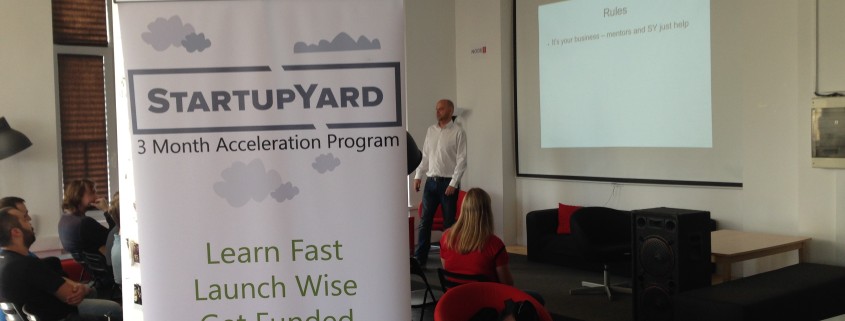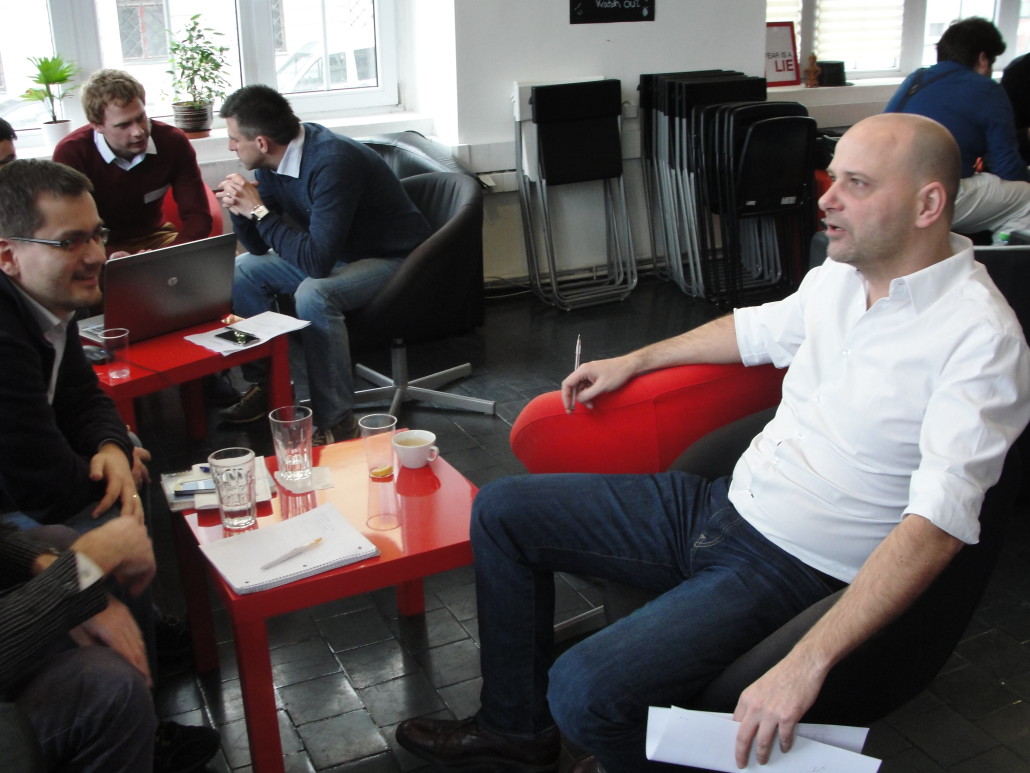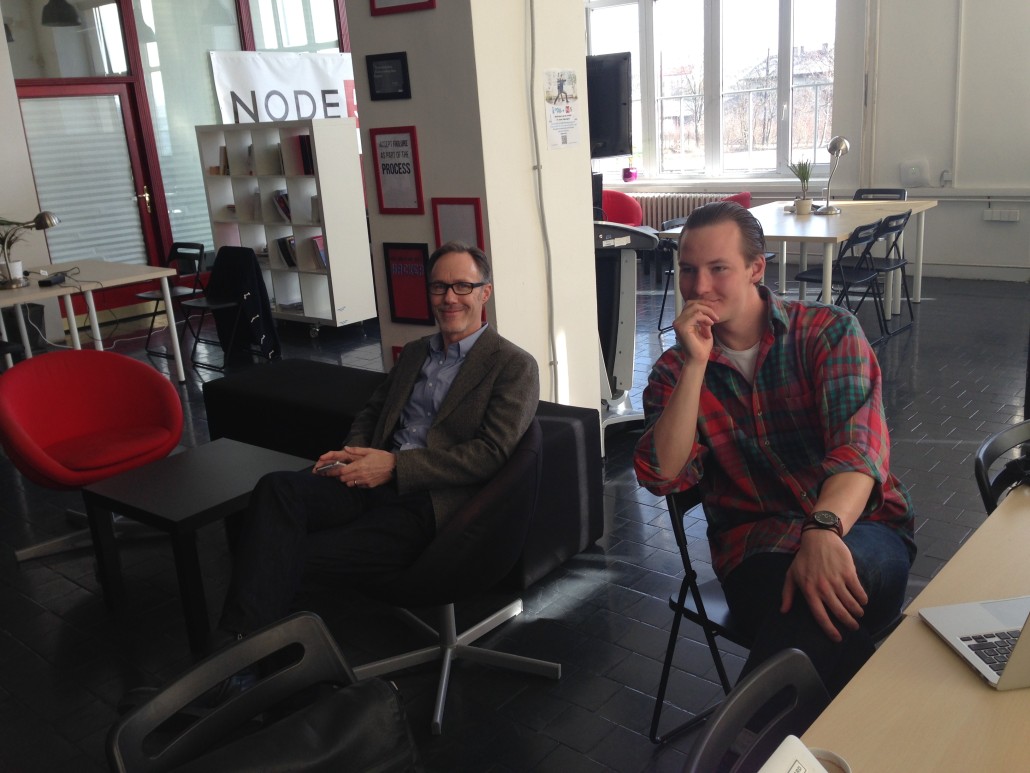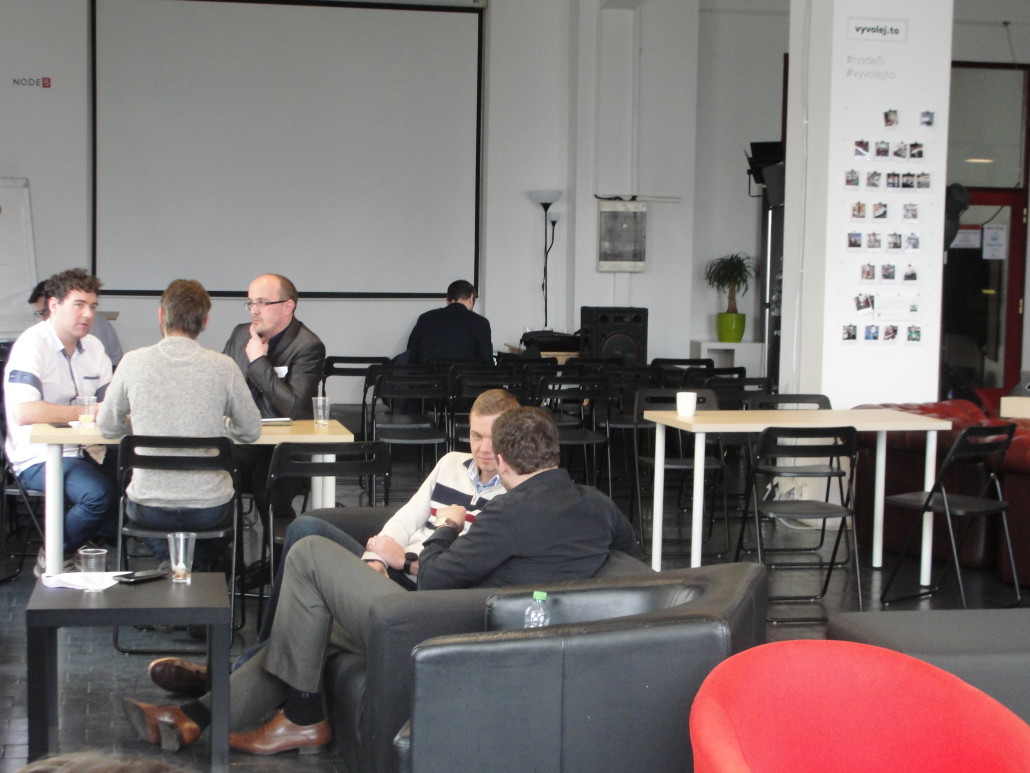StartupYard 2015, Week One: Feature, Product, Company
StartupYard is now officially underway, and our cohort of 7 exciting startups have now joined us at Node5, to begin an intensive month of mentoring.
How it works
Typically, our mentoring days are hectic. Startups have to study and think about who they’ll be meeting with beforehand, so they’re prepared for many different kinds of conversations in the same day. We require our startups to be present and ready to meet with mentors, who come in during the morning, and begin meeting with the companies one-by-one. They meet with meetings can run as short as 20 minutes, or as long as an hour or more, with some mentors and companies never really wanting to suspend the discussion. Each mentor comes into the experience with different motivations and priorities. Most have backgrounds or a great deal of experience in business, sales, and marketing, and that can be a big challenge for startups that are usually dominated by technical founders. But as we like to tell our startups: you can teach an engineer business skills much more easily than you can teach a businessperson to think like an engineer.
The job of the startups, and particularly their CEOs, is to be like a sponge, absorbing not only what the mentors have to say about their products, their companies, their markets, and themselves, but also how the mentors react to their ideas, their plans, and their work so far. Hopefully, mentors and startups will “click,” for whatever reason, and the mentor will slowly form a relationship with the startup, becoming a resource and a touchstone for future conversations and connections. In the best cases, the mentors become long-term advisors and even sometimes investors in the startups. These meetings are, in part, auditions for that kind of chemistry. To help reinforce these relationships, we require the startups to report on their discussions, with notes and key insights for each meeting, as well as next steps with each mentor (if any). Not every meeting is a home run, but the startups have plenty of chances to meet the right advisors.
We start the first week of the accelerator with a tool we adopted last year, the Positioning Statement. This is a simple but powerful tool for stating, as clearly and as concisely as possible, what a company’s place is on the market. It isn’t a feature list, or a business plan, but more of an orientation about the type of company a startup is and will be, and its relationship to other companies, or to potential customers. The positioning statement format looks like this:
| Product Positioning Statement:Our Product isFor (target customers):
Who (have the following problem): Our product is a (describe the product or solution): That provides (cite the breakthrough capability): Unlike (reference competition): Our product/solution (describe the key point of competitive differentiation): |
It is the job of the startups to turn these essential points into a brief, declarative statement about the company. Though they’re not always accurate in terms of what a company has accomplished up to the present moment, they represent what the company would like to be when it enters the market.
Why a Positioning Statement?
What we find time and again when it comes to startups that are just beginning to think about raising funding for their ideas, is that they are unequipped or unready to talk about their ideas in ways that make sense to different types of interested parties. And being unable to clearly discuss their ideas, they’re often equally unsure or unaware of what aspects of the business they haven’t considered fully, or well.
That’s why the first term in the positioning statement template we use (first pioneered by Geoffrey Moore in his book Crossing the Chasm), is about “who.” If there’s one aspect of a startup’s market that they’ve probably given less consideration than is needed, it will be the customers. We often hear: “we are our own customers,” as if that is an explanation that warrants no further examination at all. Often ideas seem very natural once you’ve lived with them and thought about them for months, or even years. But you will never be inside the head of your potential customer, because you thought up your product. It’s better not to pretend that you can have any objectivity about it; you have to talk to customers -a lot of them- and intellectually understand how they relate to your products and to your company. The thing that sells your customers on your products may be totally unrelated to what motivated you to make the product in the first place. Maybe you wanted a more efficient process, or a more beautiful and intuitive experience. But your customers may respond only to price. Or it may be the exact opposite. You have the opportunity to make a thousand avoidable errors by assuming you know your customers better than you really do. Knowing them takes an enormous amount of input, and it can’t be done any other way than with feet on the pavement, and by calling and writing to as many people as possible. The positioning statement begins as a projection of who you think your customers are: but that is a point of discussion, and the mentors will have ample opportunities to challenge those assumptions, given their years of experience with customers themselves.
That’s all normal, and it’s necessary too. Most startups are built around the kernel of an idea: a feature, rather than a whole product, much less a fully formed company culture, a business plan, and a go to market strategy. We probably wouldn’t take a startup that only wanted to “be in X business,” hoping that they’ll find a niche, simply because there’s money to be made. Rather, we take startups that have a laser focus on one small aspect of a much larger industry. It’s that singular focus that allows some startups to grow so quickly: they do one thing extremely well, and they do everything else well enough that they’re able to make a business out of it. That one thing makes their company a success, and they pick up the other nuances as they grow. The positioning statement is about drawing their attention towards all the things that they need to do well enough to survive and grow on the market, from the earliest stages. Knowing their customers is the first and possibly the most vital thing that they have to do well enough to survive, and which they will have to do very well to thrive.
Feature, Product, Company
Each of our startups, to varying degrees, are somewhere along the road between a Feature, a Product, and a Company. Few are real companies, although some are getting close. The danger for many startups, and we see this very often in our selection process, as well as outside mentoring, is that they skip one of these steps- most often the Product step.
Often we meet interesting, brilliant founders who have devised very impressive solutions to obvious problems. However, we usually leave these meetings with a single impression: “It’s a feature.” While starting with a key feature is usually the key to a startup’s early growth, a lot of startups stop right there. They build the company too exclusively upon the idea of a single functionality, making it both more vulnerable to competition, and less saleable as a product. You can convince customers to use your calendar app, for example, if it does most things about as well as Google Calendars, but has one feature that Google doesn’t have. However, if it has that killer feature, and doesn’t do any of the basic functionalities of Google, then it will be nearly impossible to actually sell. It might be interesting to customers, but it won’t sell itself. And worse, many startups actually get themselves into this situation on purpose: they tailor the product to a hyper-specific feature set, because they think that that will save them from comparisons to established products. “We can’t compete with Google, so we don’t even try.” Certainly they will have saved themselves from any positive comparisons to the competition. Now all the comparisons will be about what the product doesn’t do. Though many startups will answer this by saying that their product doesn’t have competition, our answer is always the same: there is always competition. Competition is either another product, or doing nothing. A feature list that is too narrow to justify the time necessary to use your product, has laziness or disinterest as an indigenous form of competition.
Startups have to be focused on their key differentiators, but there’s a minimum threshold that a product needs to breach to be called “a product,” and to justify someone paying for it, or adding it to the list of things they will use on a regular basis. And even if a startup hits a homerun with a small, absolutely killer feature, there is little stopping competitors from noticing the demand for that feature, and simply adding it themselves. Job done. This is one of the toughest things for our startups to face, and it’s one of the real values in the mentoring sessions: the mentors help them to understand how they can exist in a competitive marketplace. Finding that recipe of focus is the first monumental challenge for any company that wants to grow like a startup has to.
Overkill To Kill Objections
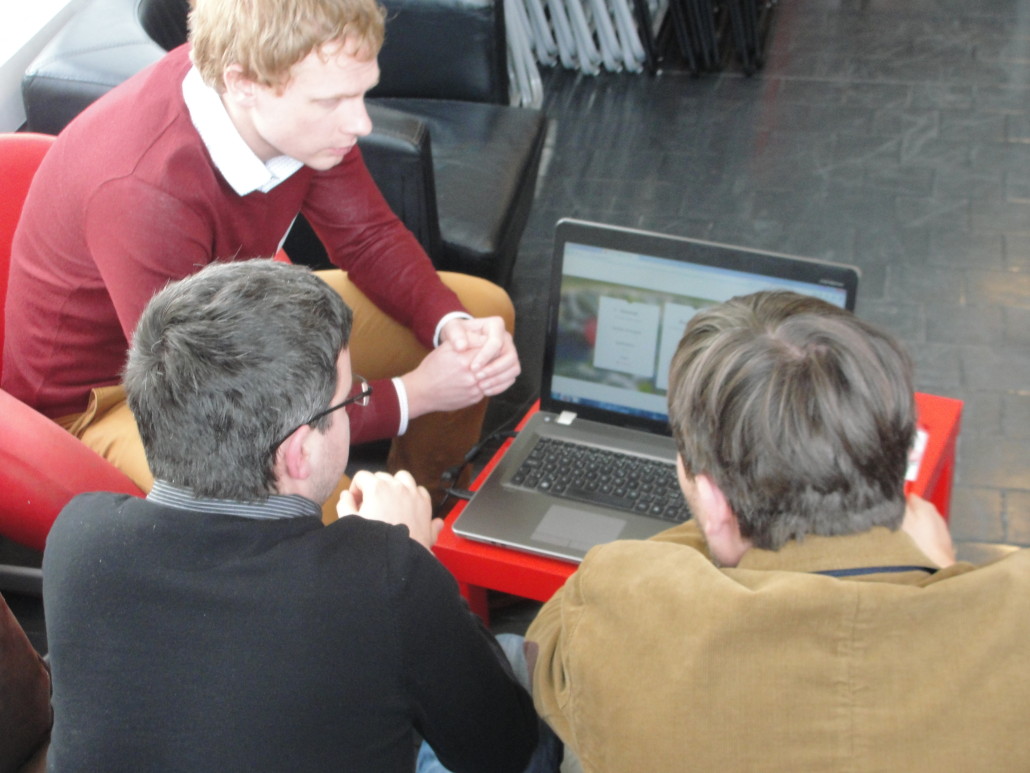 The positioning statement frames that “window into the mind,” by establishing the company’s (and therefore the product’s), place among other products and in the market as a whole. It establishes, in broad terms, how the startup will go from a killer feature, to a product people will buy, to a company that people will trust, so we make sure that our startups spend quite a bit of time hammering out, refining, going over, and rehearsing their position statements, listening to what the mentors say in response, and paying attention also to what they don’t say in response. The objections that mentors raise will be about basic concerns, many of which the startups have not previously considered. Are there legal complications? Do they understand the market well enough? Is the business plan workable? Do the costs make sense? Do they have the right branding? Would the mentor buy from or invest in the company? These are all objections that add value in experience for the startups- they will have to work to answer all of them, and more that they haven’t even begun to think about. Eventually, these problems will begin to find their solutions, and the startups will be able to incorporate the answers into their pitches, their marketing, and their business plans.
The positioning statement frames that “window into the mind,” by establishing the company’s (and therefore the product’s), place among other products and in the market as a whole. It establishes, in broad terms, how the startup will go from a killer feature, to a product people will buy, to a company that people will trust, so we make sure that our startups spend quite a bit of time hammering out, refining, going over, and rehearsing their position statements, listening to what the mentors say in response, and paying attention also to what they don’t say in response. The objections that mentors raise will be about basic concerns, many of which the startups have not previously considered. Are there legal complications? Do they understand the market well enough? Is the business plan workable? Do the costs make sense? Do they have the right branding? Would the mentor buy from or invest in the company? These are all objections that add value in experience for the startups- they will have to work to answer all of them, and more that they haven’t even begun to think about. Eventually, these problems will begin to find their solutions, and the startups will be able to incorporate the answers into their pitches, their marketing, and their business plans.
So answering objections is important, but a lack of objections is also key- do the mentors not object because they are convinced, or because they don’t understand? This is a sense that our startups have to develop over many sessions, repeating and refining until they find the exercise to be a waste of time, and desperately want to move on. That’s when we know they’re ready to present.

